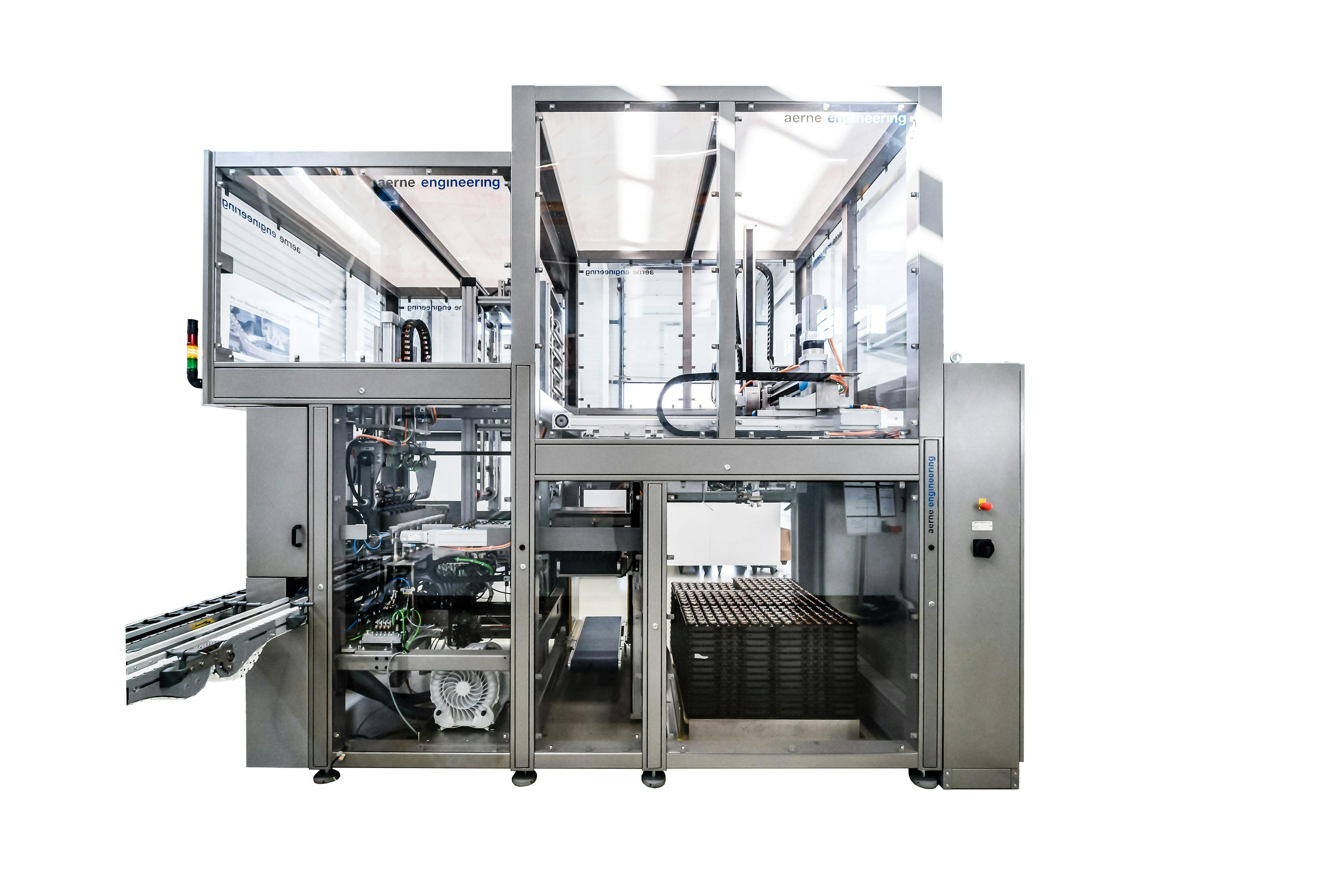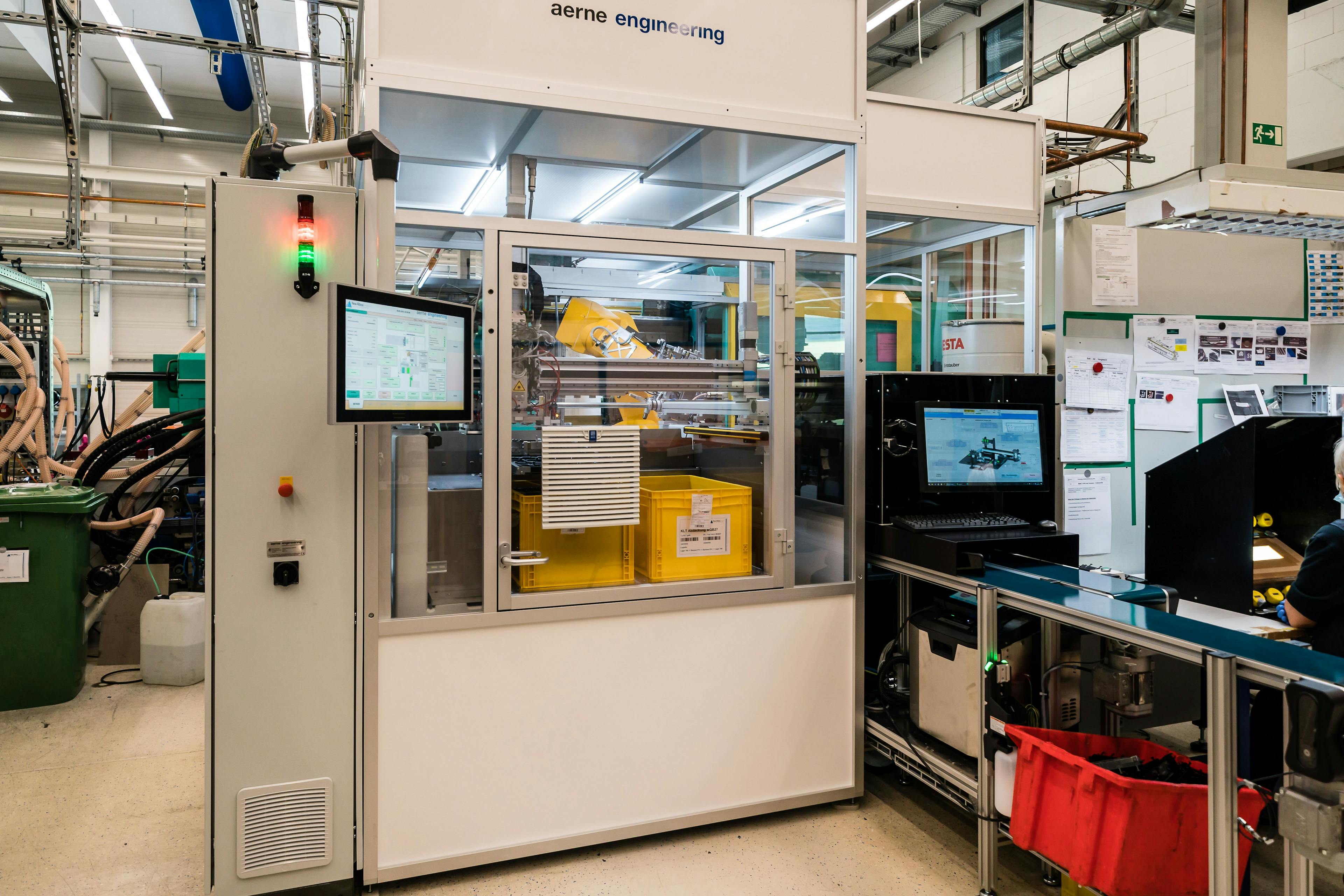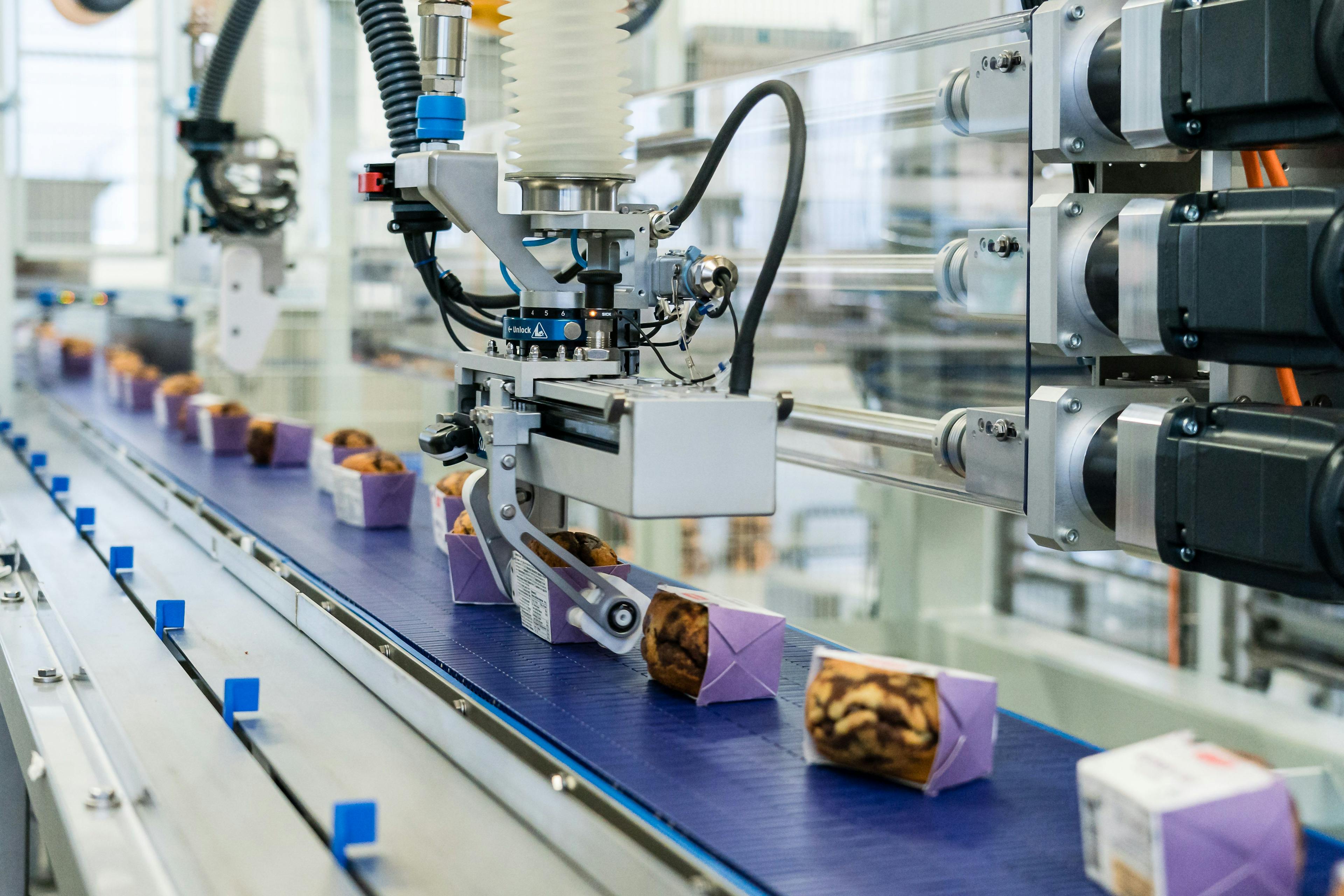Benefits
Starting point
Various products are filled in high quality into the respective bottles and shipped worldwide. Until now, the bottles were cleaned manually and fed into the filling line.
Solution
The operator moves a pallet filled with blisters into the system and closes it. Thanks to extensive safety equipment inside the system, this can happen while the system is running. As soon as the system is closed, a gantry handling unit moves above a blister, aligns itself with the help of a camera, removes a blister, and places it on a conveyor belt. If service should be performed on the handling unit, blisters can also be inserted manually from the operator side. Here, a full blister is placed on a conveyor belt. The blister moves in a lifting device, and from there it is either lifted in a paternoster, which serves as a buffer for the refilling time, or it goes to a transfer handling unit. The transfer handling unit takes a row of bottles from the blister and deposits these on the blow-off stations. These clean and align each glass bottle. Here, an air lance is moved into the bottle while the ionized air is suctioned out. After cleaning, an intermediate handling unit removes the bottles and sets them on pucks, which guide the bottles to the next system. The empty blisters are stacked and conducted out of the system.
Advantages for the customer
Thanks to the system, the customer only has to stack the bottles in blisters on a pallet and feed them to the machine to prepare for filling. The alignment, cleaning and feeding of the bottles from the blisters and to the next station are executed fully automatically. Due to the flexible design, prototype bottles can also either be fed to the system in blisters, or individually for testing purposes. Flexible high-speed assembly cell for injection-molded parts









